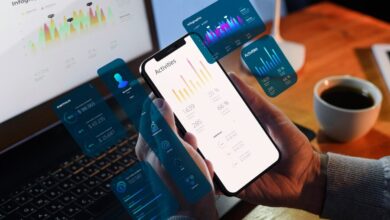Maximizing Profits with Crypto Automated Trading

Introduction
With cryptocurrency’s burgeoning popularity, a new wave of investors and traders is discovering the power of automated trading as a means to carve out their share of the digital gold rush. Crypto markets, with their unparalleled volatility and around-the-clock trading, present a unique environment where automation can be the difference between capturing opportunities and missing out.
For those with an interest in leveraging the crypto space for maximum gain, automated trading offers a sophisticated approach to harnessing market movements and executing trades without constant human oversight.
Understanding Crypto Automated Trading
In its purest form, automated trading involves the use of pre-programmed instructions to execute a trading strategy.
The Benefits of Automation in Crypto
Automated trading delivers several key advantages over traditional methods:
- Elimination of Emotional Biases: By removing the emotional element of trading, automated systems can help traders stick to their strategies in the face of volatility and unexpected market movements.
- 24/7 Market Monitoring: Cryptocurrency markets never sleep, and automated tools can keep a vigilant eye on your behalf, ensuring you never miss a critical trading opportunity.
- Back-Testing and Strategy Refinement: With automated trading software, users can test their strategies across historical data to fine-tune and optimize their setups, a luxury not easily available to manual traders.
- Increased Speed and Efficiency: Bots can execute trades instantaneously, capitalizing on timely market conditions faster than any human could.
Strategies for Crypto Automated Trading
There are several popular strategies used in automated crypto trading, each catering to different risk appetites and market conditions:
- Trend Following: These strategies aim to capitalize on sustained price movements, either upward (bullish) or downward (bearish).
- Arbitrage: Automated systems can exploit price differentials of the same asset across different exchanges, buying low and selling high for an almost guaranteed profit.
- Market Making: High-frequency trading bots continually place limit orders to profit from the spread between the bid and ask price, providing liquidity to the market.
- Mean Reversion: This strategy bets on the likelihood that an asset’s price will return to its average after deviating significantly, allowing for profitable trades when the market corrects itself.
Maximizing Profits
Every automating trading venture is embarked upon with the singular goal of maximizing profits, and here’s how to do it effectively:
Setting Clear Investment Goals and Risk Management Strategies
Before deploying any automated trading system, defining your investment goals and risk tolerance is vital. Are you looking for short-term gain, or is your strategy more attuned to long-term wealth accumulation? Your goals dictate the tools and strategies you’ll use. Equally important is risk management. Decide on how much of your portfolio is at risk for each trade, and what measures – like stop-loss orders or position sizing – will guard your capital against market downturns.

Choosing the Right Automated Trading Platform and Tools
The backbone of your automated trading operations will be your trading platform and the tools it offers. Robust and reliable infrastructure is non-negotiable, as is the ability to customize and integrate your chosen tools, whether that’s through APIs or third-party plugins.
Leveraging Data Analytics and Machine Learning for Informed Decision-Making
In an environment as dynamic as the cryptocurrency market, informed decisions are often the most profitable. Machine learning tools can analyze vast amounts of data to reveal patterns and insights that human traders might miss, making them a valuable asset in your trading arsenal.
Case Studies or Examples
To drive home the potential of automated trading, considering real-life success stories can be illuminating:
Individual Investors and Their Gains
Examples of hobbyist crypto traders who turned a modest investment into a significant return through carefully curated automated systems can inspire new entrants to the field, showcasing that success is not the sole purview of institutional behemoths.
Institutional Application in the Crypto Space
Likewise, examining how established financial entities, like hedge funds, have deployed automated strategies in the crypto market can offer a glimpse into the profit potential of ceaseless automation.
Challenges and Risks
Despite the promise of profit, automated crypto trading is not without its challenges:
Technical Hurdles
The setup and maintenance of an automated system can be a technical challenge, particularly for those new to the space. Lapses in connectivity or system failures can lead to missed opportunities or, worse, unwanted trades.
Regulatory Uncertainty
The crypto market operates in a regulatory grey area, and automated trading can amplify the risks associated with this uncertainty. Staying abreast of legal developments is crucial to protect your investments.
Market Volatility
While volatility can be the friend of an astute trader, it is also their foe. Automated trading systems must be equipped to manage and even capitalize on sudden and severe market swings.
Over-Reliance on Automation
Trusting your entire portfolio to automated systems without regular review and intervention can be a costly mistake. Humans and machines complement each other in this space, and the best approach often involves a healthy balance of both.

Conclusion
Automated trading in the crypto market represents an exciting frontier for profit-seekers. By using the right tools, strategies, and a solid understanding of both the potential and the pitfalls, investors can unlock the full profit-earning potential that the cryptocurrency market has to offer.



